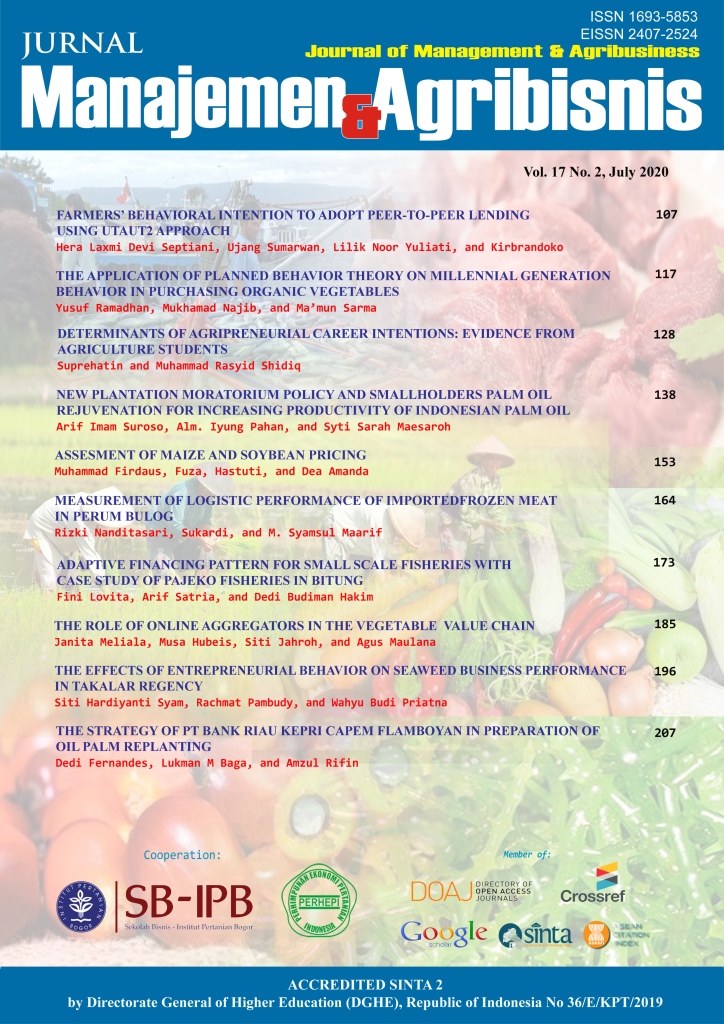Farmers’ Behavioral Intention to Adopt Peer-To-Peer Lending Using UTAUT2 Approach
Abstract
The limited access of smallholder farmers to funding sources is one of the main challenges facing Indonesia agriculture sector. In order to address this constraint some Fintech entities have initiated peer-to-peer (P2P) lending for funding the farming. Different from formal financial institution, farming funding P2P lending facilitates farmers by not requiring any collateral and applying profit sharing scheme instead of interest, which is in favor of smallholder farmers condition. Irrespective of the benefits, the adoption rate of farming funding P2P lending by farmers is still relatively low. Based on this background, the objective of this study is to investigate the factors influencing the behavioral intention of farmers to adopt farming funding P2P lending. This study uses variables of UTAUT2 and Schwartz Theory of Basic Values. The respondents of this research are 530 farmers in West Java, Indonesia who have and have not participated in farming funding P2P lending. The respondents are selected using purposive sampling method. The population of adopter farmers are the members of farming funding P2P lending providers Crowde and TaniFund. Whereas the non-adopter farmers are selected based on representation of various farming commodities. The data is analyzed using SEM, demonstrating the results that there are five variables showing significant correlation with behavioral intention to adopt P2P lending, which are performance expectancy, hedonic motivation, price value, habit and values.
Keywords: consumer behavior, peer-to-peer lending, technology adoption, UTAUT2, valuess
Authors
Authors who publish with this journal agree to the following terms:
- Authors retain copyright and grant the journal right of first publication with the work simultaneously licensed under a Creative Commons Attribution License that allows others to share the work with an acknowledgement of the work's authorship and initial publication in this journal.
- Authors are able to enter into separate, additional contractual arrangements for the non-exclusive distribution of the journal's published version of the work (e.g., post it to an institutional repository or publish it in a book), with an acknowledgement of its initial publication in this journal.
- Authors are permitted and encouraged to post their work online (e.g., in institutional repositories or on their website) prior to and during the submission process, as it can lead to productive exchanges, as well as earlier and greater citation of published work (See The Effect of Open Access).

